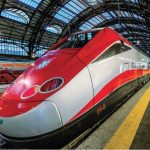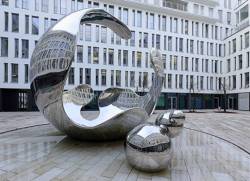The critical nature of positioning, navigation and timing (PNT) technology for all types of infrastructure and applications is well established, as is the vulnerability to interference of radio frequency signals provided by the GNSS satellites, the main source for PNT data.
Speaking at the recent final presentation of the European Space Agency-funded ICING (‘Independent critical navigation’) project, Sven-Ingve Rasmussen and Øyvind Pettersen of Space Norway and Anders Bjørnevik of Kongsberg Discovery Seatex, explained why finding a new approach to PNT provision is so necessary.
In Norway, users who depend on PNT are increasingly experiencing disturbances including loss of GNSS, jeopardizing critical operations such as navigation at sea, search and rescue and air traffic control, compromising charting systems, and automatic identification and information systems. Now, the increasing occurrence of jamming and spoofing events, possibly linked to Russian activities, and particularly affecting Northern Norway, is driving the demand for new contingency technologies. The Norwegian Defense Ministry, notably, has called for the development of alternative means of PNT provision as protection against GPS jamming.
A new approach
Researchers have previously suggested that VHF data exchange (VDE) might be used as a possible alternative source of PNT data, and could form a basis for alternative PNT in a multiple-source solution using GNSS satellites. The ICING project set out to test this novel concept using VHF data exchange via satellite (VDE-SAT), where specific frequency bands would serve in the delivery of a purpose-designed, digitized ranging signal, a source of independent PNT for maritime navigation.
The newly launched NorSat-TD satellite, owned by Space Norway, provided the test platform, equipped with a VDE-SAT payload by Kongsberg Discovery Seatex. The latter company also provided a state-of-the-art VDE mobile station and VDE simulator software.
The tests resulted in over 1000 VDE-SAT range measurements, captured by a ground station in Trondheim, Norway. The measurements showed that VDE-SAT can provide ranging with a standard deviation of 335.2 m, with an identifiable and correctable influence of ionospheric time-delay. Additionally, a positioning performance analysis shows that a single satellite can provide positioning accuracy of near 1 km to maritime users. Thus, a single VDE-SAT ranging signal has the potential to compliment terrestrial platforms used for independent ranging mode PNT.
While a positioning accuracy of 1 km may not seem very impressive to many of today’s practiced PNT users, the ICING team pointed out that the project represents only a first feasibility testing campaign using a single satellite. As such, it should be seen an important first step towards possibly developing a new, multi-satellite, alternative PNT source, to serve areas exposed to debilitating GNSS interference. Importantly, in its final presentation, the team provided key recommendations for immediately improving the performance of this kind of system.






